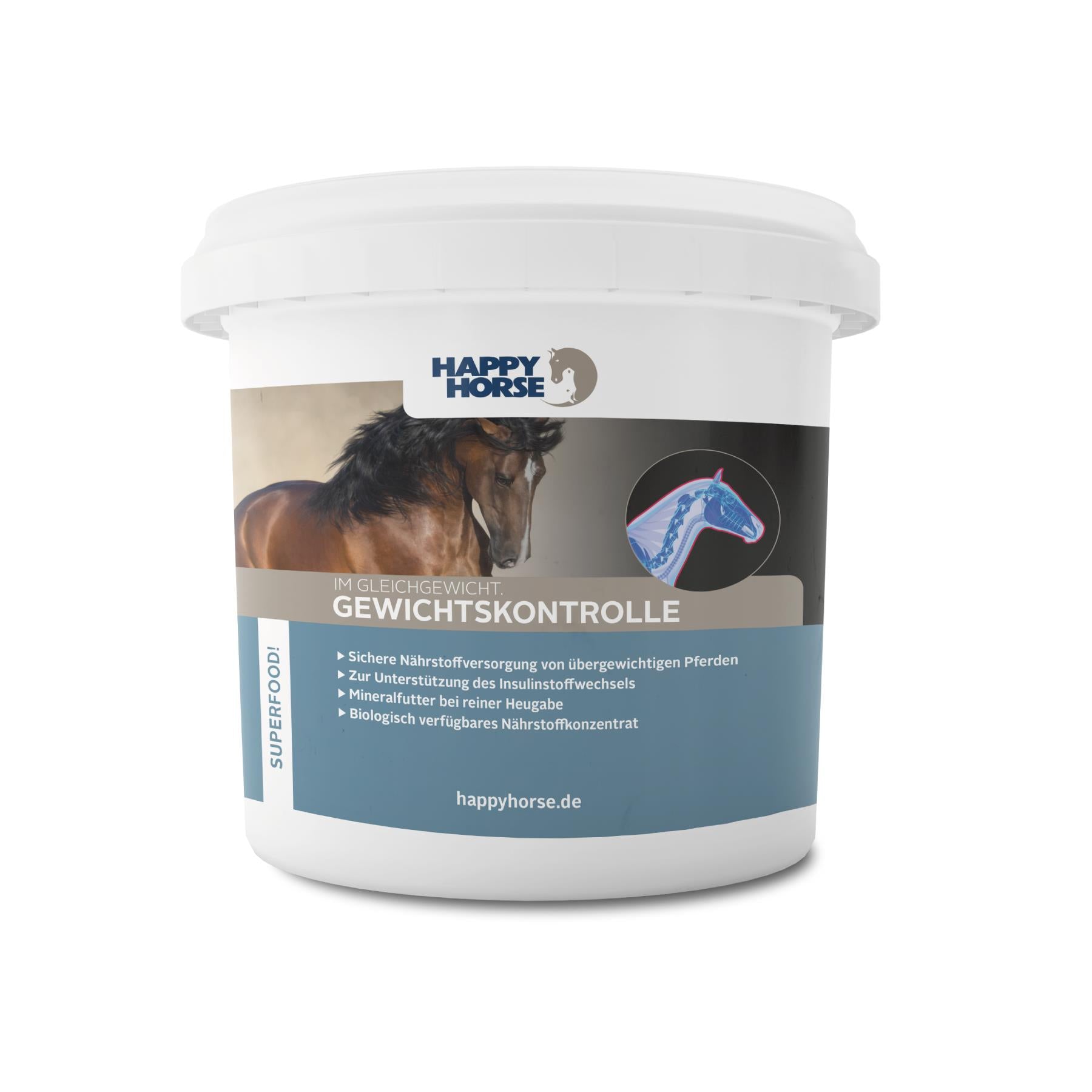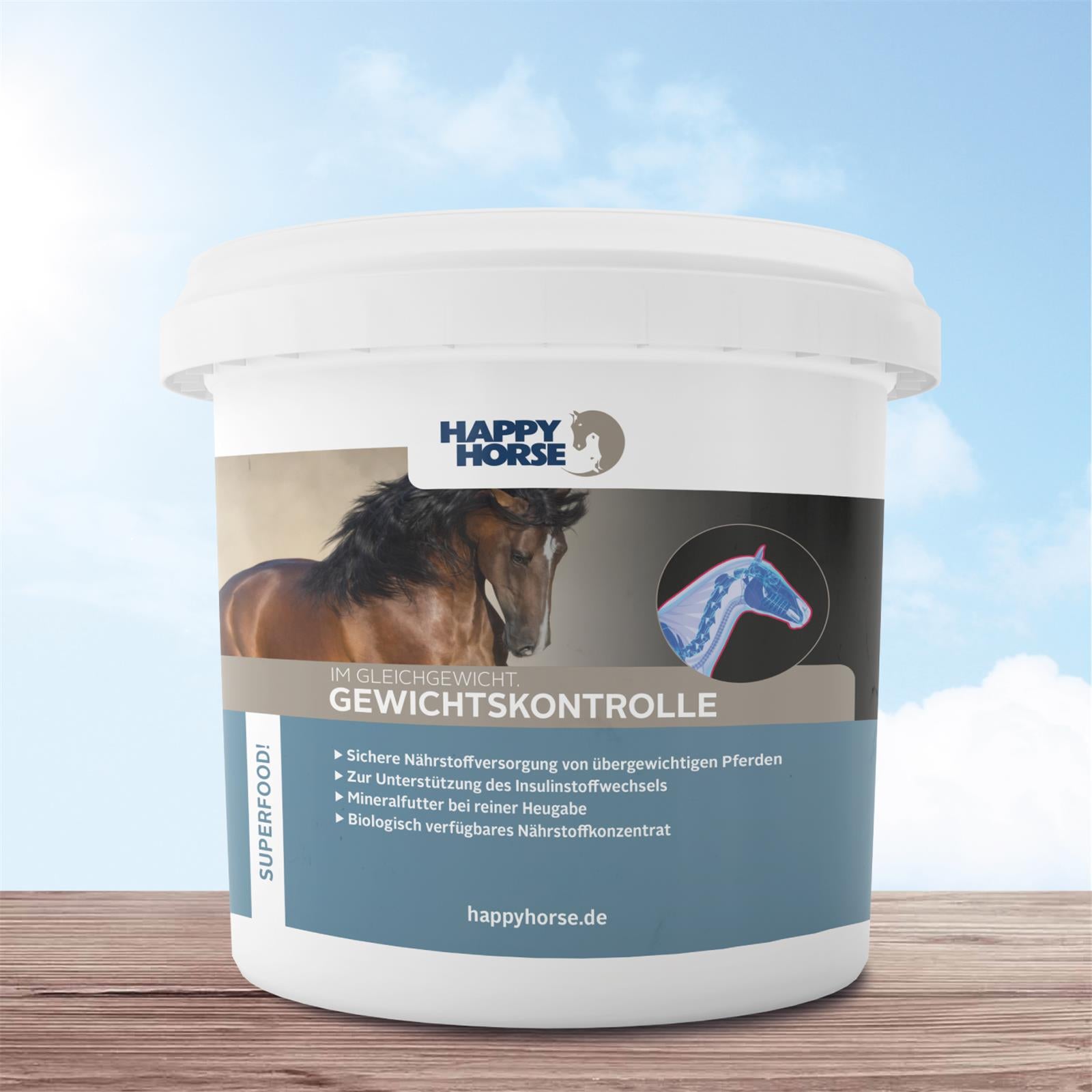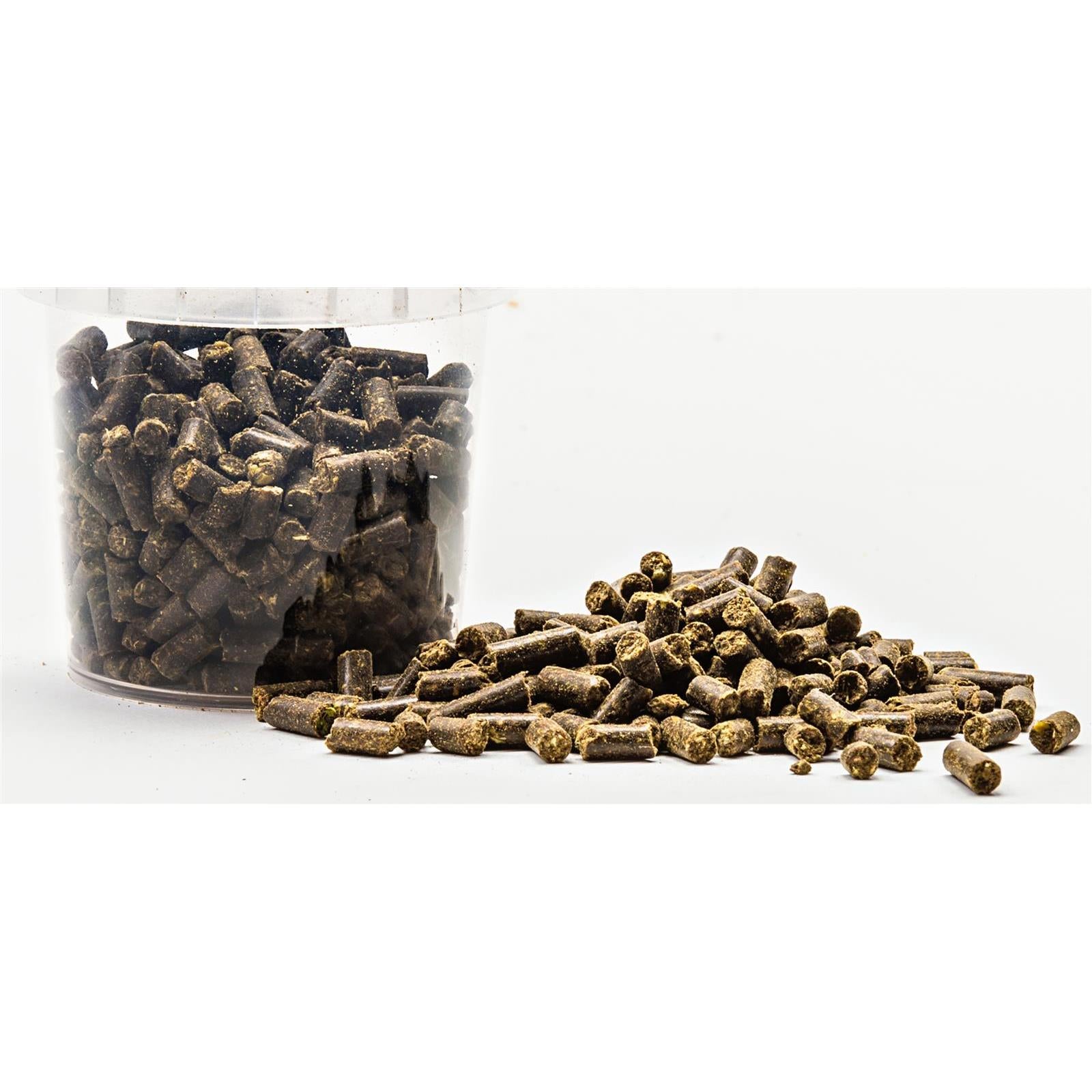Superfood "Weight Control" offers a highly concentrated combination of nutrients specifically for the needs of horses at risk of obesity, EMS or laminitis for prevention and optimal care.
✓ high biological availability of nutrients
✓ if there is an acute risk of laminitis
✓ after laminitis/EMS to ensure nutrient supply
✓ Standing chuck
✓ Low-starch mineral feed with pure roughage rations
✓ ideal to combine with Sensitive “Security grain and molasses free”.
“My horse is only allowed to eat hay” is something you hear more and more often in the stable these days. Horse owners are often at a loss when it comes to feeding horses with equine metabolic syndrome (EMS) or laminitis. But due to this one-sided feeding, the horse does not receive the nutrients it needs to bring its metabolic processes back into balance. The good news, however, is that a syndrome is not an illness that has to be permanent. This can also be remedied through consistent feeding management and adapted exercise.
The triggering factors are often extensive grazing opportunities and high amounts of concentrated feed with unsuitable workloads. Large amounts of carbohydrates, which are found in grass and also in grains (as starch), accelerate the increase in blood sugar. In order to transport this into the tissue, the metabolism requires the well-known insulin. Long-term exposure to these factors ultimately leads to a decrease in insulin effectiveness and even insulin resistance. According to current knowledge, these circumstances are the main cause of the dreaded laminitis.
“Laminitis & Weight Control” offers the horse a low-starch, dietary feed alternative without depriving him of the necessary micronutrients. An adapted exercise program is also particularly important. Active ingredients that help include vitamin B complexes but also vitamin E, selenium and minerals such as magnesium, zinc, manganese and chromium. It also contains highly bioavailable nutrients from herbs and brewer's yeast that prevent insulin resistance. Based on current knowledge, the risk of laminitis can be significantly reduced.


















